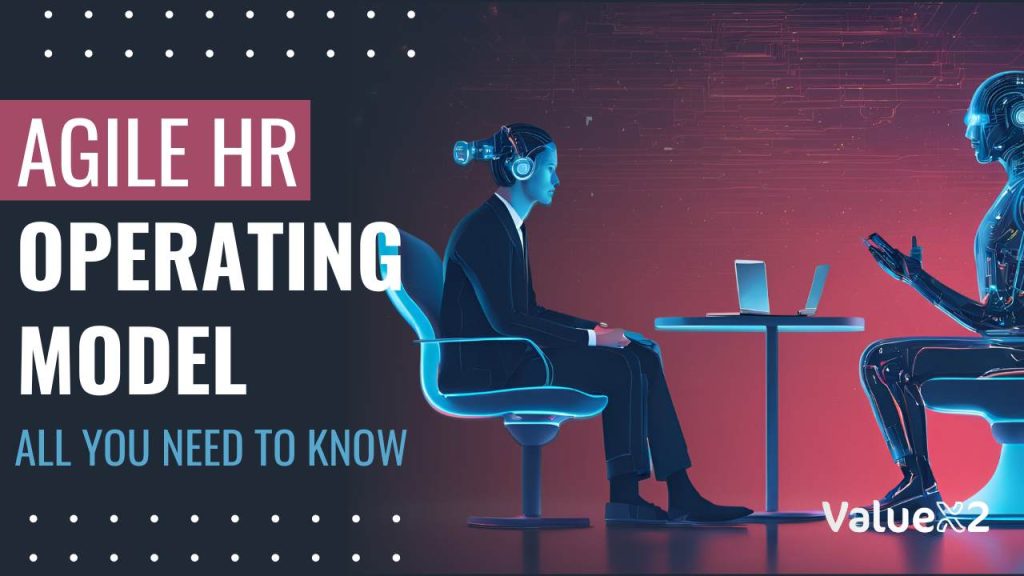Here’s everything you must know about the Agile HR Operating Model.
The Agile HR operating model transforms the working of Human Resources (HR) departments by changing responsiveness and integration. Typically, HR is regarded as a function that encompasses strict procedures and long-term strategies. However, this approach is replaced by the Agile methodology that focuses on the importance, flexibility, and constant feedback and the approach based on iterations. This blog explains what the Agile HR operating model is and its principles that underpin the practices discussed in this context.
Understanding Agile Methodology in HR
It is based on the ideologies of repetitiveness, teamwork, and flexibility to change. Agile which was initially used for software development has been implemented in many sectors including HR. The key concept is fragmentation which implies division of work into smaller tasks with regular and more flexible review. This approach is quite different from conventional models of human resource management that are typically long-term and rather rigid.
Agile Development Principles Applied to HR
The Agile development principles can be seamlessly applied to HR practices:
Customer Collaboration Over Contract Negotiation: In HR, this is interpreted as an employee-friendly strategy such that all policies and procedures are developed after considering the result of the employee’s feedback.
Responding to Change Over Following a Plan: Agile HR is the concept that calls for change constantly especially in the micro and macro business environment and or employees’ demands.
Working Solutions Over Comprehensive Documentation: Avoid wasting efforts on overly bureaucratic and document-based HR solutions that do not contribute to the functional performance of the business.
Transforming HR with Agile
Transforming HR with Agile involves a shift from traditional, heavy process approaches to more dynamic and iterative practices. This transformation can be seen in several key areas:
Recruitment: Flexible HR policies entail that staffing takes a shorter time because they facilitate an organization to meet talent demands and market changes faster.
Performance Management: Other initiatives include the annual performance review process in which performance measurements and short-term objectives are adjusted regularly instead of once a year.
Learning and Development: Flexibility in methods of training and development guarantees that the training programs meet the organization and employee needs as they are revised frequently. HR professionals can leverage agile methodologies within Learning and Development to flexibily respond to training needs.
HR Operations Strategy in an Agile Framework
Developing an effective HR operations strategy within an Agile framework involves several steps:
Creating Cross-Functional Teams: Usually, ‘cross-functional teams’ means that members of the team come from different areas of the same operational function, for instance, the human resource management department has a recruitment function, a training function and a performance management function, so people from each of these functions form the cross-functional team.
Implementing Iterative Processes: Implementing one or more HR projects is coordinated into sub-tasks and checked and modified at regular intervals depending on the feedback received.
Emphasizing Transparency and Collaboration: Since Agile HR focuses on effective people management, it is crucial to keep everyone in the organization informed and therefore, it is okay to open communication channels and collaboration tools.
Strategic Human Resource Planning and Agile
Strategic human resource planning is actually about the correspondence of HR tactics with organizational goals. Here, this planning becomes even more flexible due to the Agile environment it is being framed in. Strategic processes of SHRM make sure that HR can quickly respond to changing business requirements, facilitate innovation, and enhance the level of organizational adaptability.
Integrating Agile Frameworks and Technologies in HR
Agile HR could work well with specific Agile methodologies including Kanban and Scrum since they are useful in organizing tasks and projects. Kanban is centred on work visualization, WIP optimization, and the improvement of the workflow. Scrum, however, focuses on the series of iterations and sprints, thus, encouraging improvement.
In addition, continuing the use of Artificial intelligence in the management of an organization’s human resources can help effectively reduce the HR function across multiple points starting from recruitment and ending with the organization of performance assessments.
When comparing Agile and Waterfall methodologies within the framework of HR, it should be noted that the Agile methodology promotes flexibility and adaptability, while the Waterfall methodology is characterized by clear steps. It is significant for the constantly changing environment that is visible in today’s business world.
Benefits of an Agile HR Approach
Adopting an Agile HR approach offers numerous benefits:
Enhanced Flexibility: They deliver flexibility as HR processes in an organization can quickly shift to one challenge or opportunity as it presents itself.
Improved Employee Engagement: Regular feedback and direct employee participation in the HR processes are significantly related to increased engagement and satisfaction.
Better Alignment with Business Goals: Strategizing the HR practices as agile makes it possible for the company to constantly adapt its activities to fit the changing needs of the business.
Increased Efficiency: Since the bureaucratic and time-consuming procedures are eliminated and only iterations are performed, the HR activity enhances its productivity and quality.
Challenges and Considerations
While the Agile HR strategy offers many benefits, it also comes with challenges:
Cultural Shift: Agile involves a shift of organizational culture, so the people should focus on flexibility and collaboration.
Training and Development: Agile practices should be adopted by HR professionals and for this purpose they should also be trained.
Measuring Success: Agile HR probably requires more values-oriented approaches to be implemented, and traditional HR metrics may not apply.
Frequently Asked Questions
- What is Agile HR?
Agile human resource management means the implementation of Agile ideas such as adaptability, teamwork, and incrementalism in the HR sphere. This methodology seeks to make the HR organization more sensitive to the employees, the business environment and organization requirements by closely linking the HR activities with the needs of the organization. - How does Agile HR differ from traditional HR?
Agile is about flexibility, the ability to change course quickly as needed, which contrasts with HR’s usual goal of developing long-term strategies and set protocols. This means that the dynamics of Human Resources can be changed frequently for a competitive response without making the company and employees lethargic. In this context, Agile HR also aims at integrated work and information sharing, avoiding functional teams’ separation. Hence the versatility of the matrix structure enables a firm to provide faster response to customer needs and even bring out more radical solutions. - What are the benefits of adopting an Agile HR approach?
Agile HR makes structure fluid and not fully rigid, continually involves employees to foster engagement, realigns HR operations with the business strategy and also improves effectiveness because it avoids rigidity by striving to make improvements in cycles. - What challenges might an organization face when implementing Agile HR?
Some of the issues can be named as: transition to an organization with flexibility and collaboration implementation means out-of-the-box thinking and changing one’s mindset. Education of the Human Resources professionals about Agile approaches is critical but can be costly. Organizations need to create new indices for the assessment of Agile HR performance since the existing methods of assessment can be irrelevant in this case. Other essential issues include resistance to change management and uniformity of communication with all the company’s employees. - How does Agile HR enhance the recruitment procedures?
It is essential to note that Agile HR enhances recruitment, and although it is not uniquely innovative, the objectives are divided into small parts, such that adjustments can be made if needed. This leads to an enhanced procedure and flow of the hiring process by cutting down the TTH and enhancing the candidate experience. Flexible working practices improve the communication of members of the recruitment team and thus improve their coordination.
Conclusion
The Agile HR operating model is a new concept that is different from the conventional HR practices in place offering flexibility and effectiveness in executing the core competencies of HR. In incorporating Agile, HR departments can quickly and effectively regain their relevance and contribute to the realization of the company’s objectives while at the same time increasing engagement from its employees and overall organizational productivity. With the world still facing constant changes in the business environment, Agile HR provides a strong framework for developing an HR department that responds to change.
Agile is not a tool set or a process but a culture in the right application of which amazing results could be realized in the remaking of the HR function. Transforming to Agile is a process that entails a lot of effort, but when it comes to the organizational Human Resource department, the advantages are worth the effort for any company that aspires to be future-oriented.
As an HR professional, it is vital to continuously upgrade your skills and future-proof your career. Learning about Agile HR and how strategic HR management can leverage agile principles and values in the ICAgile certification course Agility in HR (ICP-AHR). These sessions provide real-world takeaways, frameworks, and methods that prepare teams to apply agility to HR strategies and build their collective intelligence.

Sagar is an HR Agile Coach & Business Agility Consultant with over a decade of experience in HR functions at small and large multinational corporations. He has been running an HR consulting firm for the last few years, focusing on leveraging agile methods to increase business efficiency.
Sagar is an authorized instructor for ICAgile Agility in HR (ICP-AHR) and Business Agility Foundations (ICP – BAF) training courses. He has considerable experience in coaching and training on applying agile practices for his clients, primarily HR departments. He also provides consulting for HR for Agile and Agile for HR transformation to corporates.







